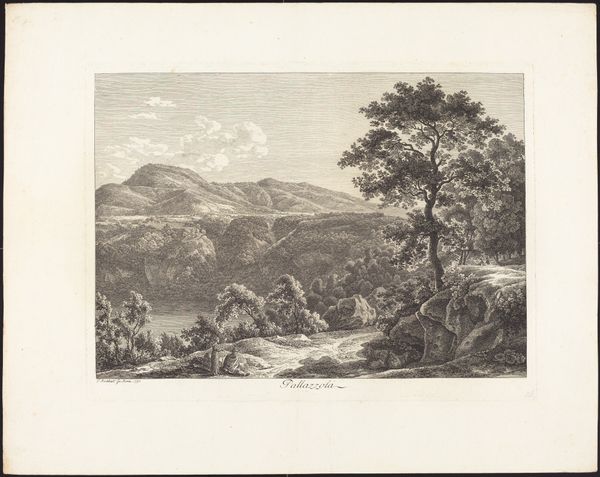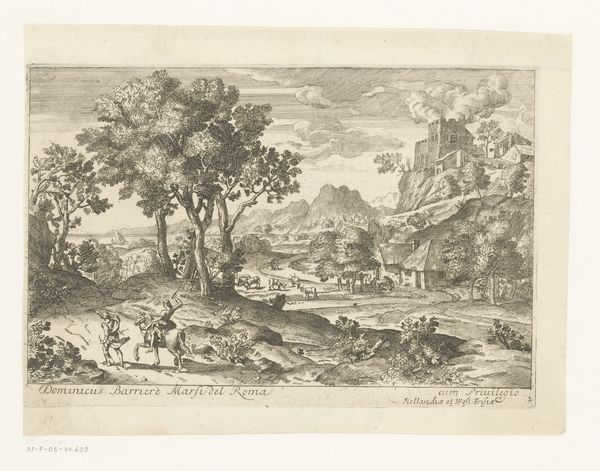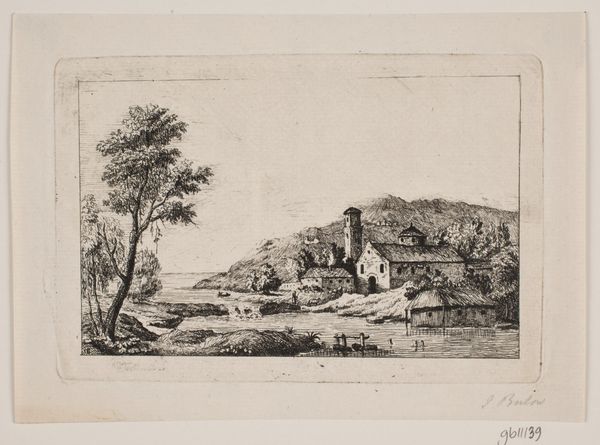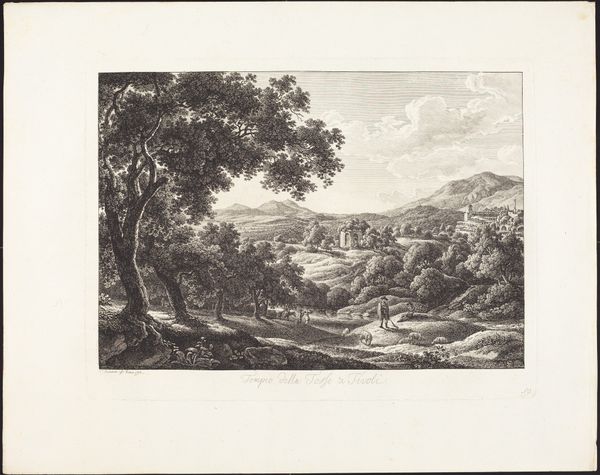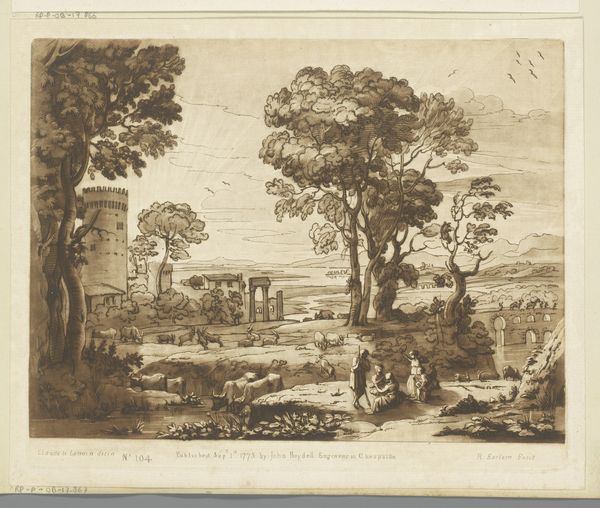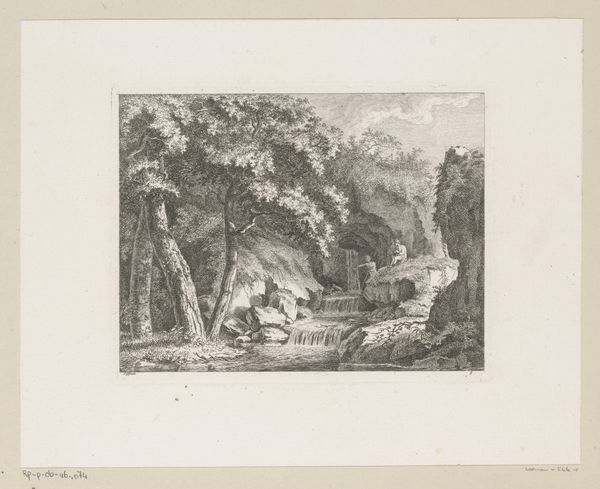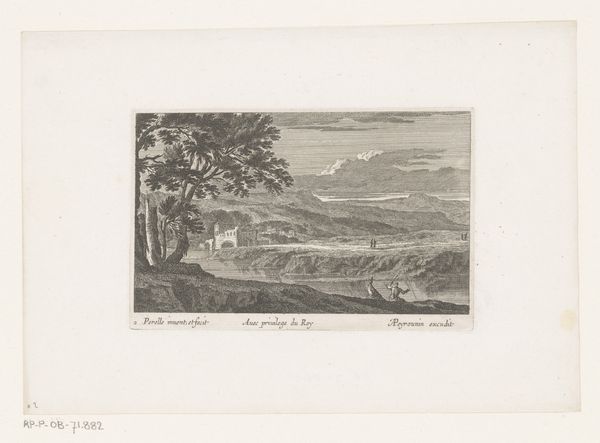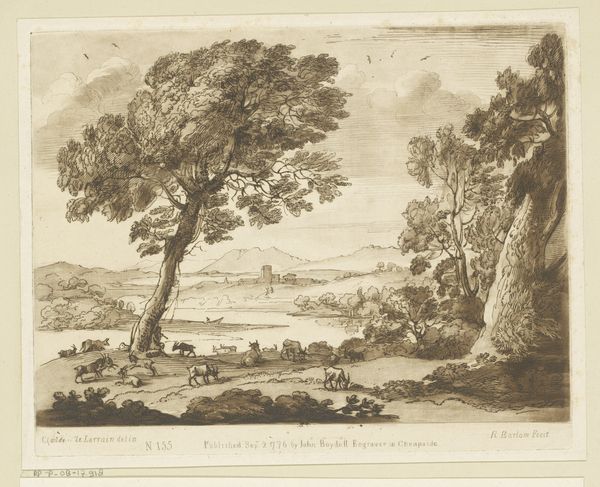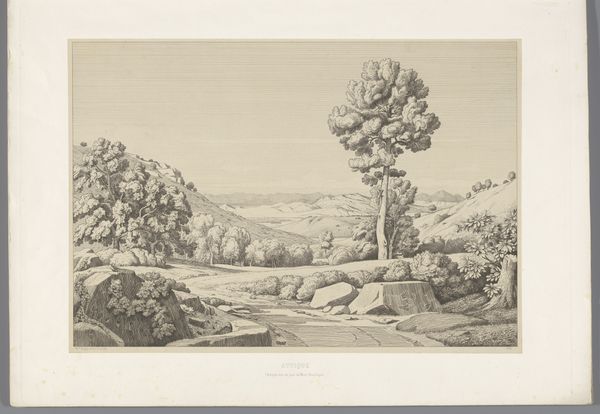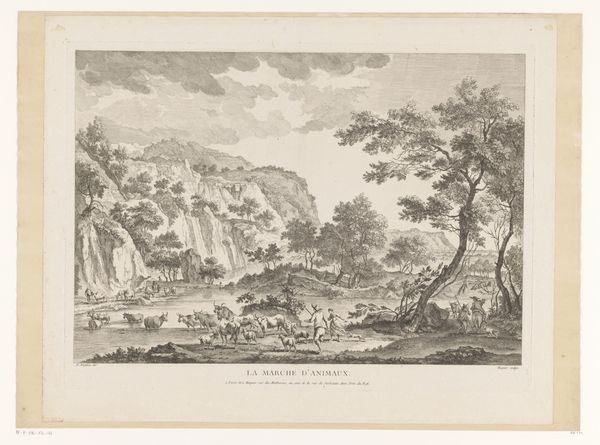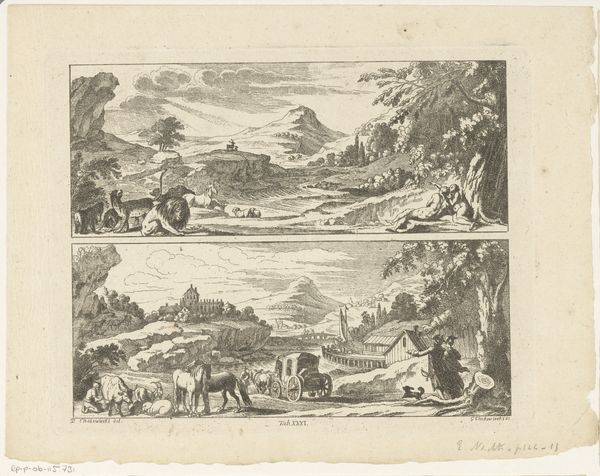
drawing, print, ink, pen
#
drawing
#
ink drawing
#
pen drawing
# print
#
landscape
#
ink
#
romanticism
#
pen
#
history-painting
Dimensions: image: 14.2 x 19.6 cm (5 9/16 x 7 11/16 in.) sheet: 22.6 x 30.2 cm (8 7/8 x 11 7/8 in.)
Copyright: National Gallery of Art: CC0 1.0
Editor: Ernst Fries's pen and ink drawing, "The Convent of Neuburg from Haarlass," created in 1829, depicts a serene landscape. The detail is incredible for a pen drawing. How should we interpret the process and materials used here? Curator: This is a wonderful example of how the so-called "minor" arts – drawing, printmaking – can provide a valuable lens onto broader societal trends. Consider the sheer labor involved in creating such a detailed scene using pen and ink. What kind of market existed that supported such intensive production? Editor: So, you're suggesting that this wasn't just about artistic expression but also about the art market and who could afford it? Curator: Exactly. Think about the social context of Romanticism. On one hand, there's this idealized vision of nature, reflected in the landscape itself. But on the other, there's the reality of industrialization. These prints would have been a commodity, circulating within a specific social class that yearned for that ideal but was also implicated in the changing means of production. It isn’t oil on canvas, but it reproduces efficiently. Do you think this choice made the artwork more accessible, reaching a broader audience than a painted landscape might? Editor: That makes perfect sense. I hadn’t considered how the medium itself connects to larger economic and social structures. It gives "landscape" a whole other layer of meaning. Curator: And this particular landscape -- a convent-- is fraught with historical significance. These structures owned huge swaths of land, which dictated a social standing for themselves in society through materials and land ownership. The choice of subject reinforces the idea of power. Editor: It’s fascinating how viewing art through the lens of material and production can unlock new levels of understanding. Curator: Indeed. It forces us to look beyond the aesthetic and consider art's place in the larger material world.
Comments
No comments
Be the first to comment and join the conversation on the ultimate creative platform.
